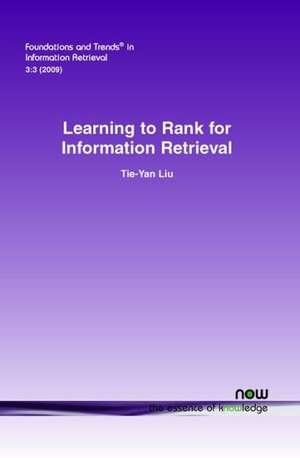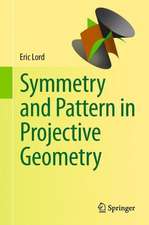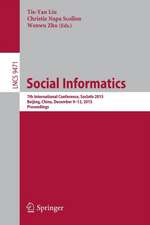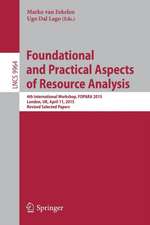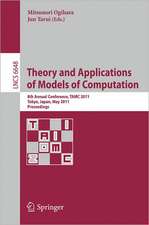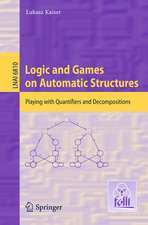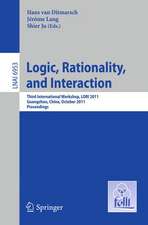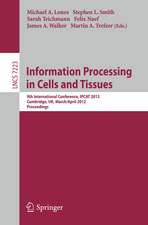Learning to Rank for Information Retrieval: Foundations and Trends(r) in Information Retrieval, cartea 9
Autor Tie-Yan Liuen Limba Engleză Paperback – 31 mai 2009
| Toate formatele și edițiile | Preț | Express |
|---|---|---|
| Paperback (2) | 440.85 lei 6-8 săpt. | |
| Now Publishers – 31 mai 2009 | 440.85 lei 6-8 săpt. | |
| Springer Berlin, Heidelberg – 29 sep 2014 | 930.41 lei 6-8 săpt. | |
| Hardback (1) | 934.69 lei 6-8 săpt. | |
| Springer Berlin, Heidelberg – 6 mai 2011 | 934.69 lei 6-8 săpt. |
Preț: 440.85 lei
Preț vechi: 551.07 lei
-20% Nou
Puncte Express: 661
Preț estimativ în valută:
84.36€ • 88.71$ • 69.70£
84.36€ • 88.71$ • 69.70£
Carte tipărită la comandă
Livrare economică 17 aprilie-01 mai
Preluare comenzi: 021 569.72.76
Specificații
ISBN-13: 9781601982445
ISBN-10: 1601982445
Pagini: 122
Dimensiuni: 156 x 234 x 7 mm
Greutate: 0.18 kg
Editura: Now Publishers
Seriile Foundations and Trends in Information Retrieval, Foundations and Trends(r) in Information Retrieval
Locul publicării:United States
ISBN-10: 1601982445
Pagini: 122
Dimensiuni: 156 x 234 x 7 mm
Greutate: 0.18 kg
Editura: Now Publishers
Seriile Foundations and Trends in Information Retrieval, Foundations and Trends(r) in Information Retrieval
Locul publicării:United States
Cuprins
1. Ranking in IR.- 2. Learning to Rank for IR.- 3. Regression/Classification: Conventional ML Approach to Learning to Rank.- 4. Ordinal Regression: A Pointwise Approach to Learning to Rank.- 5. Preference Learning: A Pairwise Approach to Learning to Rank.- 6. Listwise Ranking: A Listwise APproach to Learning to Rank.- 7. Advanced Topics.- 8. LETOR: A Benchmark Dataset for Learning to Rank.- 9. SUmmary and Outlook.
Recenzii
From the reviews:
“The book treats a very hot research topic: that of ranking great amounts of documents based on their relation to a given query, i.e., the examination of the inner mechanics of the search engines. The text is especially addressed to information retrieval and machine learning specialists and graduate students, but it might appeal to scientists from other related fields, too.” (Ruxandra Stoean, Zentralblatt MATH, Vol. 1227 2012)
“The book treats a very hot research topic: that of ranking great amounts of documents based on their relation to a given query, i.e., the examination of the inner mechanics of the search engines. The text is especially addressed to information retrieval and machine learning specialists and graduate students, but it might appeal to scientists from other related fields, too.” (Ruxandra Stoean, Zentralblatt MATH, Vol. 1227 2012)
Notă biografică
Tie-Yan Liu is a lead researcher at Microsoft Research Asia. He leads a team working on learning to rank for information retrieval, and graph-based machine learning. So far, he has more than 70 quality papers published in referred conferences and journals, including SIGIR(9), WWW(3), ICML(3), KDD, NIPS, ACM MM, IEEE TKDE, SIGKDD Explorations, etc. He has about 40 filed US / international patents or pending applications on learning to rank, general Web search, and multimedia signal processing. He is the co-author of the Best Student Paper for SIGIR 2008, and the Most Cited Paper for the Journal of Visual Communication and Image Representation (2004~2006). He is an Area Chair of SIGIR 2009, a Senior Program Committee member of SIGIR 2008, and Program Committee members for many other international conferences, such as WWW, ICML, ACL, and ICIP. He is the co-chair of the SIGIR workshop on learning to rank for information retrieval (LR4IR) in 2007 and 2008. He has been on the Editorial Board of the Information Retrieval Journal (IRJ) since 2008, and is the guest editor of the special issue on learning to rank of IRJ. He has given tutorials on learning to rank at WWW 2008 and SIGIR 2008. Prior to joining Microsoft, he obtained his Ph.D. from Tsinghua University, where his research efforts were devoted to video content analysis.
Textul de pe ultima copertă
Due to the fast growth of the Web and the difficulties in finding desired information, efficient and effective information retrieval systems have become more important than ever, and the search engine has become an essential tool for many people.
The ranker, a central component in every search engine, is responsible for the matching between processed queries and indexed documents. Because of its central role, great attention has been paid to the research and development of ranking technologies. In addition, ranking is also pivotal for many other information retrieval applications, such as collaborative filtering, definition ranking, question answering, multimedia retrieval, text summarization, and online advertisement. Leveraging machine learning technologies in the ranking process has led to innovative and more effective ranking models, and eventually to a completely new research area called “learning to rank”.
Liu first gives a comprehensive review of the major approaches to learning to rank. For each approach he presents the basic framework, with example algorithms, and he discusses its advantages and disadvantages. He continues with some recent advances in learning to rank that cannot be simply categorized into the three major approaches – these include relational ranking, query-dependent ranking, transfer ranking, and semisupervised ranking. His presentation is completed by several examples that apply these technologies to solve real information retrieval problems, and by theoretical discussions on guarantees for ranking performance.
This book is written for researchers and graduate students in both information retrieval and machine learning. They will find here the only comprehensive description of the state of the art in a field that has driven the recent advances in search engine development.
The ranker, a central component in every search engine, is responsible for the matching between processed queries and indexed documents. Because of its central role, great attention has been paid to the research and development of ranking technologies. In addition, ranking is also pivotal for many other information retrieval applications, such as collaborative filtering, definition ranking, question answering, multimedia retrieval, text summarization, and online advertisement. Leveraging machine learning technologies in the ranking process has led to innovative and more effective ranking models, and eventually to a completely new research area called “learning to rank”.
Liu first gives a comprehensive review of the major approaches to learning to rank. For each approach he presents the basic framework, with example algorithms, and he discusses its advantages and disadvantages. He continues with some recent advances in learning to rank that cannot be simply categorized into the three major approaches – these include relational ranking, query-dependent ranking, transfer ranking, and semisupervised ranking. His presentation is completed by several examples that apply these technologies to solve real information retrieval problems, and by theoretical discussions on guarantees for ranking performance.
This book is written for researchers and graduate students in both information retrieval and machine learning. They will find here the only comprehensive description of the state of the art in a field that has driven the recent advances in search engine development.
Caracteristici
Only comprehensive overview of a key innovative technology for search engine development Written by one of the leading authorities in this field Combines scientific theoretical soundness with broad development and application experiences Includes supplementary material: sn.pub/extras
